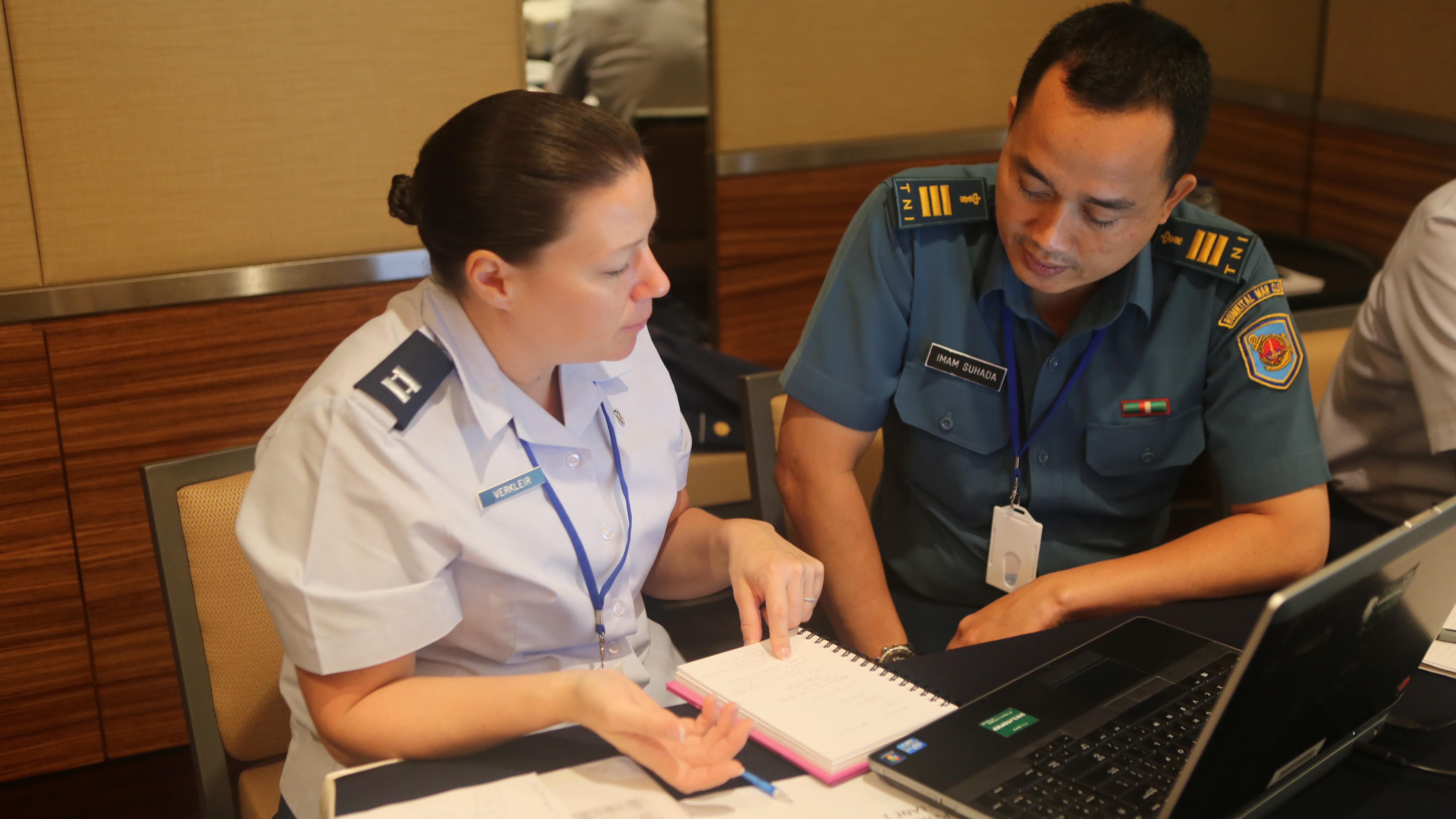By Air Force Capt. Joel Banjo-Johnson 36th Wing
JAKARTA, Indonesia, October 1, 2015 — The service members
here who are participating in Gema Bhakti -- Indonesian for "echo of good
deeds" -- are doing their part to ensure the exercise lives up to its
name.
Gema Bhakti is a 10-day bilateral joint exercise that joins
U.S. service members and the Indonesian armed forces -- the Tentara Nasional
Indonesia -- and has them work through a humanitarian-assistance and
disaster-relief scenario.
The current iteration of the exercise simulates the effects
of an earthquake.
U.S. Air Force Capt. Jodi Verkleir, 36th Medical Support
Squadron Readiness Flight commander and medical planner participant, said the
experience she is gaining is invaluable.
"I'm grateful to receive this opportunity to interact
with not only our sister services but our gracious hosts from the TNI,"
said Verkleir. "We are able to utilize each other's experiences and expertise
to plan and work through the scenario."
She said the role of a medical planner is to coordinate
medical relief efforts with military units, as well as other civilian
organizations to avoid duplication of efforts. "The same goes for other
planning functions, as the primary objective would be to ensure humanitarian
relief is received to those in need," she said.
Four Lanes of Effort
The operational-level staff exercise focuses on four lanes
of effort: the multinational coordination center; rules of engagement;
humanitarian operations and civil-military coordination; and urban search and
rescue. Each lane maintains the same overall objective, which is to coordinate
and practice how the U.S. and Indonesia would assist another country after a
natural disaster.
Verkleir said she began her discussions with the
multinational coordination center, where she engaged in dialogue with TNI
partners on the roles and responsibilities of the center during a humanitarian
relief effort.
Responders assigned to a multinational coordination center
facilitate coordination and cooperation of foreign military forces with the
affected nation to support the assistance and relief missions.
After the coordination center, Verkleir said she explored
the rules of engagement lane, where she collaborated and practiced the skills
necessary to identify, analyze, and address the legal planning considerations
inherent to the response efforts.
"Knowing ROE in [humanitarian-assistance and
disaster-relief] missions is not just for the lawyers," said Verkleir.
"It's important to understand the legalities with every mission
conducted."
Verkleir said she will proceed through the other lanes
during the rest of the exercise and she plans to learn about the significance
of interaction between civilian and military agencies in a humanitarian
situation and prioritization of requirements during rescue operations.








No comments:
Post a Comment